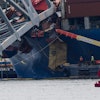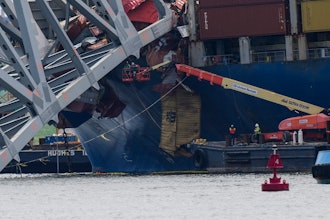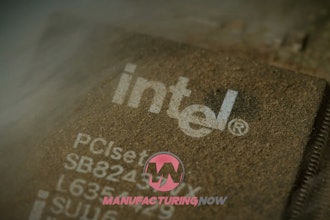Safety is naturally one of the most popular topics among our IMPO audience, and perhaps the biggest. There are endless topics when it comes to industrial safety, ranging from how to choose the right personal protective equipment to disaster preparedness.
One company synonymous with safety — both in products and services — is Grainger. The Lake Forest, IL-based company is the largest industrial distributor in the U.S. and No. 3 on Industrial Distribution’s Big 50 List. The company has always been well-known for its vast product selection, but in recent years has expanded its range of services and educational content, especially in the safety sector.
On March 12 I traveled to Orlando, FL and attended Grainger Show — the company’s annual trade show — where about 12,500 attendees convened to network. More than 700 suppliers exhibited their latest products, while thousands of Grainger representatives were on hand to learn from customers and share information. Along with editors from other trade publications, I was put through a gauntlet of interviews of Grainger executives from different departments.
One of my sit-down interviews was with Travis Kruse, Grainger’s senior director of safety strategy and solutions. We discussed topics of safety culture, the impact of changing manufacturing regulations in wake of the Trump administration and what Grainger is doing as a resource for safety education and consultation. Here’s our conversation:
IMPO: There’s a lot of talk today among industrial manufacturing about safety culture and how to make it stick. What are the keys to an effective safety culture?
Travis Kruse: Grainger can sell customers many products, but that doesn’t necessarily equate to a safety culture. We believe there’s a formula that consists of a good foundation of a safety management system — which includes things like policies, procedures and training; the right products and employee engagement; and management participation. We believe if those three things are done well, they will equate to a positive safety culture. Safety cultures can be positive and negative, so our focus is to help people to help sustain a positive culture, or help folks improve and get to that place that they want to be.
IMPO: I hear conflicting takes about whether safety reward & recognition programs are good or bad. Same for the notion of ‘this facility has gone X amount of days without a lost time accident.’ What is your view on those factors?
Travis Kruse: Reward and recognition programs have been a hot-button in the last 3 to 5 years. OSHA has been very concerned that inadequate deployment of award & recognition programs could lead to adverse behavior. As a classic example: OSHA basically suggests we wouldn’t really want to reward employees for a low incident rate, because they’re concerned that it would detract people from reporting. I won’t mention any names, but there have been companies promoting the fact that they have gone so many days without a lost time incident or recordable injury, and OSHA comes in and says, ‘you’re under-reporting.’ The reality is many of our customers today are managing not just safety, but security and environmental health. They’re very much focused on incidents that occur, on the signs and symptoms in a work environment of, ‘hey, something isn’t quite right.’
IMPO: The Trump administration has stated it wants to roll back manufacturing regulations as much as 75 percent. What kind of ramifications could that have on safety regulations and overall safety in industrial facilities?
Travis Kruse: Regulations are one way to solve a problem, but they’re not the only way. What we’ve experienced here is that many of our customers — regardless of safety regulations — are going to do the right thing no matter what. They’re more interested in driving a lower incident rate or the positive safety culture. Regulations were put in place years ago, some of them many years ago. They were put in place for very good reason and are still needed today. But with the rumors floating around about what’s going to happen, it’s a wait-and-see scenario right now. The good thing about Grainger is we help supplement those safety programs, regulatory-driven or not. There are other things driving a lot of change in the safety space. For example, ISO 45001 gets released in December. For the first time in the world’s history, there will be an international standard on health and safety. It’s been expected to have a huge supply chain effect, where larger organizations are going to ask their suppliers become certified to that standard.
IMPO: Grainger provides onsite consultation for customers. How can customers utilize this service to improve safety in their facility?
Travis Kruse: Using fall protection as example, when a customer calls us into their facility saying ‘I have a few questions around fall protection,’ we basically look to conduct a gap analysis. If the legal requirements call for a written fall protection program, we can help them with that. We might identify four or five opportunities in their facility where they need to consider either having a fall protection or fall rest system installed, or perhaps an engineered platform of some sort to help accomplish that task. We like to take the approach of engineering out that hazard first and saying ‘hey, maybe there’s an opportunity where you don’t really need to climb up there to do that job. Maybe you can do it from the floor.’ For a turnkey solution, Grainger can also come in and do an assessment from cradle-to-grave.
IMPO: Grainger has a great reputation for producing and distributing educational content about safety issues, and enhanced that further when it launched The Safety Record in 2016. Tell me about the efforts Grainger has made in terms of content.
Travis Kruse: Grainger doesn’t want to be known as just an industrial supplier. We truly want to add value to our customers. Part of adding value is being that organization that can bring the thought leadership and information necessary to supplement safety programs around the world. Items like The Safety Record are intended to help make difficult information more transparent and reader-friendly to our customers. We’ll take a topic like the OSHA Top 10 — which, no fault on OSHA — but sometimes those reports can be very bland. So what Grainger does is we’ll go talk to a panel of experts and publish a whitepaper to provide more information about why Fall Protection is No. 1, not just the fact that it is. We’re focused on The Safety Record, which is a really innovative way for Grainger to bring forth all the changes and regulations and information to the industry. It’s a very important need for our customers.






















